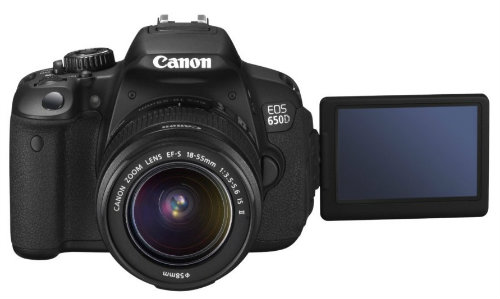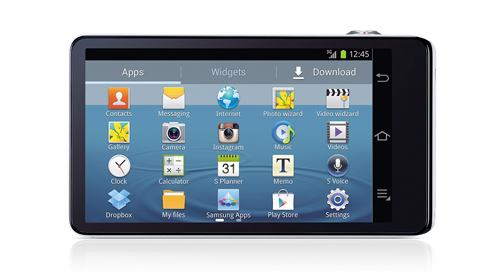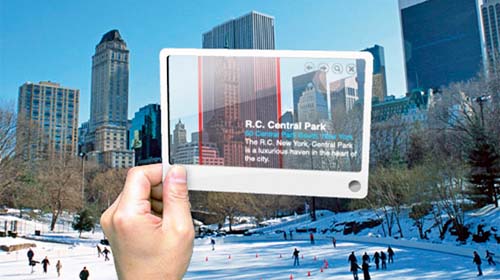The imaging industry has come a long way
from the era of films and bulb flashes. While the technology is changing
everyday, it continues to open new doors and possibilities in merging several
genres together. In our July 2012 issue of Asian Photography,
we published a Trends Special, where
we gave a rundown on some of the popular trends in photography; both in the
past and present, as well as predictions for the future. And we are proud to
say that in the three months that have followed, the imaging industry already
looks like on the verge of a revolution with some of the things that we had
predicted coming true already.
Touch-screen function in DSLRs
The most notable prediction that we made
was the touch-screen function in a DSLR. And with Canon’s announcement and
release of the EOS 650D, a multi-touch equipped DSLR, this came through. We
have also reviewed the EOS 650D in this month’s edition of our magazine so make
sure to catch that in detail. Touch screen in DSLR camera is something we have
been looking forward to for a long time now, and even though compacts had
already made a move towards a touch operated back panel, a multi touch
interface similar to a smartphone was still something that seemed very far away
into the future. Barely weeks after we predicted it, the touchscreen 650D made
an entry into the market.On top of that, Canon is expected to release the EOS M
any time now, which is Canon’s first entry in the mirrorless segment, which
also comes with a multi touch operated back panel. We expect to see a lot more
imaging brands develop this technology further.

Phone-like
camera user interface
Apart from touchscreen in DSLR’s, we
also predicted that smartphone and camera interfaces will overlap in the time
to come, as many users these days prefer their phones over a compact to shoot,as
the camera specifications of nearly all the top end smartphones in the market
is the same as most of the compact cameras available in the market. Nikon
released the S800c, an Android 2.3 powered compact camera with a back panel
that looks exactly like a smartphone.
But perhaps the biggest breakthrough in this regard has been of that of the Samsung Galaxy Camera, powered by the latest Jelly Bean OS from Google. Most of a photographer’s problem, like storage space, connectivity, instant uploads to social networks etc. can be solved with the help of the endless apps on the Android app store. The back panel is expected to work exactly like a smartphone, which can be switched to the camera mode whenever required. This does not just affect the camera industry, but also the mobile industry, where the people buying a phone for photography will surely move to the hybrid.

How these products fare in the market
remains to be seen, but it seems like the imaging industry is about to see a
lot of changes in the hardware as well as the software on the products
currently in the market. Do pick up our September issue for the latest updates.
Some of the other predictions that we
made in the present and years to come include:
Trends for the future
The progress in technology and the way it has
been utilised till now is colossal. With the only constant being change, all
you have to do is imagine it and it could very well be achieved in the near
future. Here are a few features which we would like to see new or improved in
the coming years.
Image
Quality
Convenience has, is and will always play a
major role in the compact digital camera segment; the primary reason why cameras
are becoming lighter and more compact as they evolve. However, the smaller size
of the camera should not compromise on the image quality and it is only
reasonable to expect compact camera with image quality and tonal ranges to
match that of DSLRs.

Cloud Connectivity
and Social integration
Connecting to the cloud services and
integration to the social media platform is without a doubt going to be the big
focus for the next few years to come. Whether it is pulling data in the form of
images, videos from the cameras to and fro, or sharing it with your friends,
sky is the limit for the same.
Cameras today are equipped with features like Wi-Fi,
social media sharing, geotagging, cloud sharing and backup. Further ahead,
cameras in the future could include an Internet data card or a sim card which
would enable the user to upload, share or backup data in the absence of a Wi-Fi
hotspot.
Head-mounted
Display
Although this might be a loud thought, it is
too good to let it pass. A camera mounted on your eyewear is another
possibility where digital imaging may be headed. Google’s Project Glass, a
research and development programme by Google to develop an improved reality
head-mounted display is an attempt at the same.
The future of compact digital cameras could be
one where they are redundant. The rate at which mobile phone technology is
growing, backed by the paradigm of users wanting to carry little or nothing
with them could well make mobile phones the next substitute for a camera. It
might seem farfetched but it is plausible.

